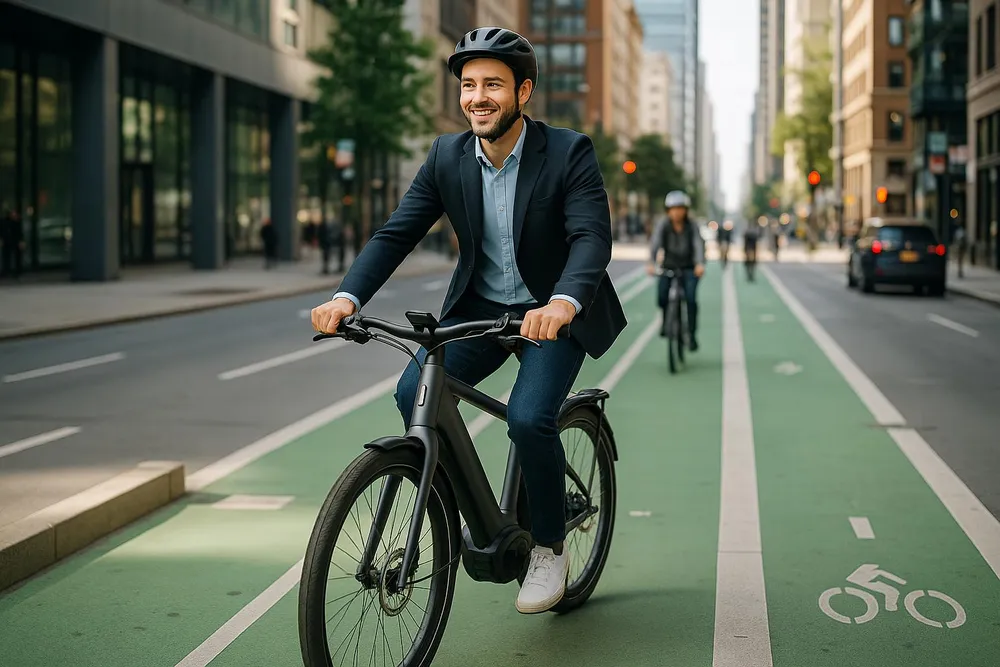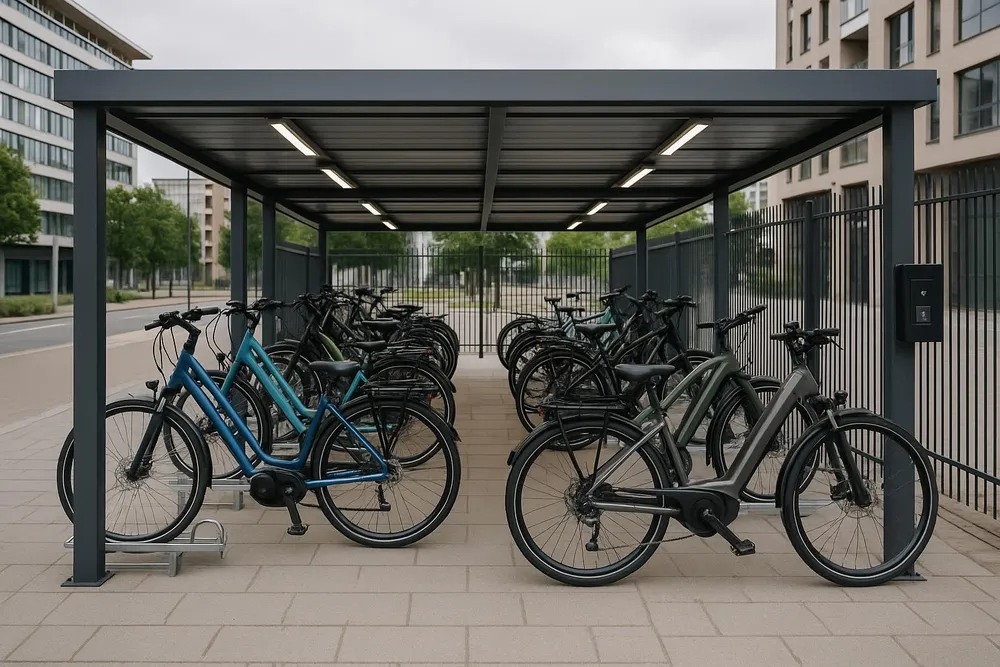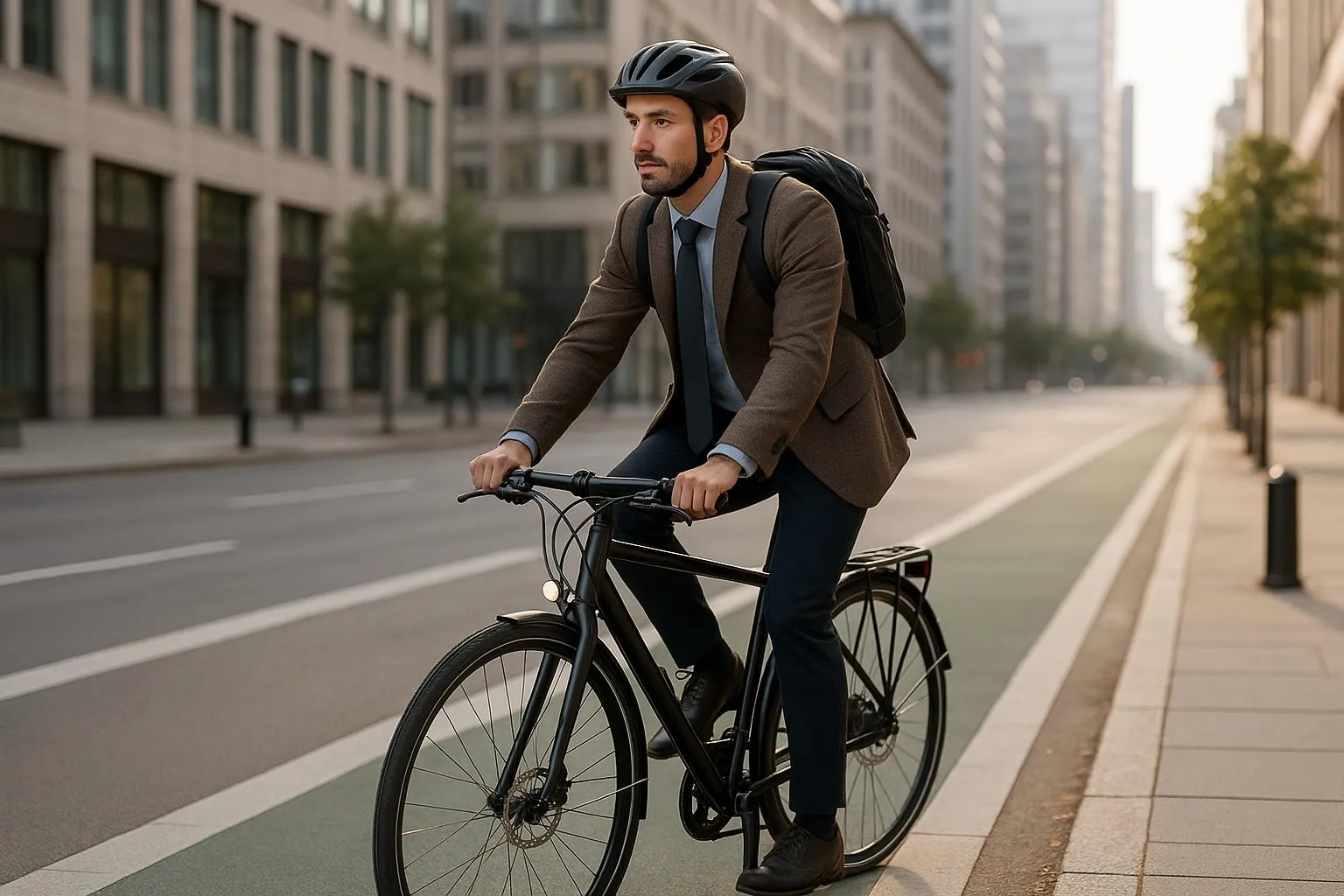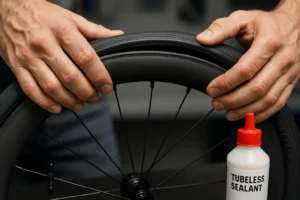In cities across the globe, a quiet revolution is taking place. The daily commute, once a source of stress and frustration, is being transformed into a source of joy, health, and empowerment. The bike commuting renaissance is in full swing, and in 2025, it has reached a fever pitch. A convergence of factors, from a renewed focus on health and wellness to a growing awareness of the environmental impact of our transportation choices, has created the perfect storm for a two-wheeled revolution.
This is not just a fleeting trend; it’s a fundamental shift in how we think about urban mobility. Cities are investing in cycling infrastructure at an unprecedented rate, with protected bike lanes, bike highways, and secure bike parking becoming the norm. E-bikes have made cycling accessible to a wider range of people, and a new generation of commuter-friendly bikes are making it easier and more practical than ever to ride to work. If you’ve ever considered trading your car for a bike, there has never been a better time to do it.
The Health and Wellness Imperative
The pandemic served as a powerful reminder of the importance of our physical and mental health. As we emerged from lockdowns, many of us sought out new ways to stay active and connect with our communities. Bike commuting offers a perfect solution. It’s a low-impact form of exercise that can be easily integrated into your daily routine. It’s a great way to get your heart rate up, burn calories, and build strength. And it’s a proven stress-reliever, with studies showing that cycling can reduce anxiety and improve mood.
But the benefits of bike commuting go beyond just physical fitness. It’s also a great way to connect with your city and your community. When you’re on a bike, you’re not just passing through your neighborhood; you’re a part of it. You notice the small details, you interact with your neighbors, and you experience your city in a way that is simply not possible from behind the wheel of a car.

The E-Bike Effect: Making Cycling Accessible to All
One of the biggest drivers of the bike commuting renaissance has been the rise of the e-bike. Electric bikes have made cycling accessible to a wider range of people, regardless of their age, fitness level, or the terrain they have to navigate. The gentle assistance of an electric motor can flatten hills, shorten distances, and make it possible to arrive at work without breaking a sweat.
This has been a game-changer for many people who would have otherwise never considered commuting by bike. E-bikes have made it possible for people to ride longer distances, to carry heavier loads, and to keep up with traffic in a way that was not possible with a traditional bike. They have leveled the playing field, and they have opened up the world of cycling to a whole new audience.
The Urban Infrastructure Revolution
Of course, the bike commuting renaissance would not be possible without the support of our cities. In recent years, we have seen a massive investment in cycling infrastructure, with cities around the world building protected bike lanes, bike highways, and secure bike parking facilities. This has made cycling safer, more convenient, and more attractive to a wider range of people.
Protected bike lanes, which are physically separated from car traffic, have been a particularly important innovation. They have made it possible for people of all ages and abilities to ride with confidence, knowing that they are safe from the dangers of car traffic. And as the network of protected bike lanes continues to expand, we can expect to see even more people choosing to commute by bike.

The Future of Urban Mobility
The bike commuting renaissance is just the beginning. As we look to the future, we can expect to see even more innovation in the world of urban mobility. We will see the integration of cycling with public transportation, with more and more cities offering bike-sharing programs and allowing bikes on buses and trains. We will see the development of even more advanced e-bikes, with longer-lasting batteries, more powerful motors, and more sophisticated smart features. And we will see a world where the bike is not just a recreational toy, but a legitimate and essential form of transportation.
The future of our cities is a future with fewer cars, cleaner air, and healthier, happier people. And the bike is at the heart of that future. So, if you’re ready to join the revolution, there has never been a better time to start. Dust off that old bike in the garage, or invest in a new one. Your body, your mind, and your city will thank you for it.
For more insights on cycling and technology, explore our comprehensive guides on Urban Cycling Infrastructure Revolution: How Smart Cities Are Transforming the Cycling Experience in 2025, and E-bike Smart Technology Revolution: How AI and Connectivity Are Transforming Urban Mobility in 2025.
Explore additional resources on Bicycling Magazine: The 12 Best Commuter Bikes of 2025, PeopleForBikes, Momentum Mag: Why Governments Should Pay People to Bike to Work, We Love Cycling: Just 4 km of Bike Commuting Boosts Fitness and Cuts Emissions, and The Guardian: The age of the car is over. The future of transport is the bicycle.




